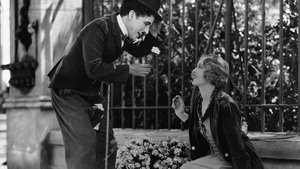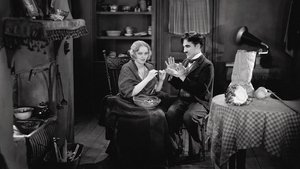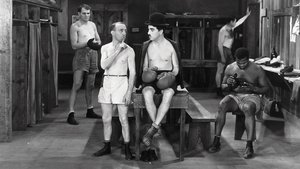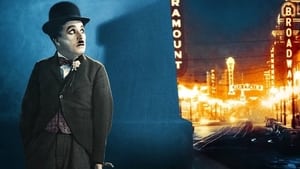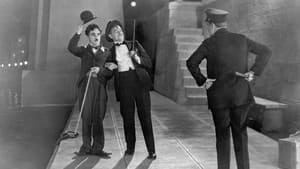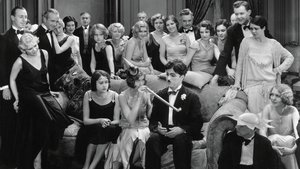City Lights (1931) Colorized: Chaplin’s Poignant Masterpiece – Now in a New Light!
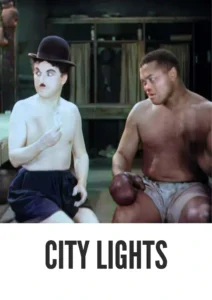
Rediscover the magic of Charlie Chaplin’s City Lights (1931), a cinematic treasure that transcends time and language. Now, this unforgettable story of the Tramp’s devotion to a blind flower girl is available in a beautifully colorized HD version, adding a fresh dimension to its enduring emotional power.
City Lights (1931) Movie Storyline: A Tramp’s Unconditional Love
City Lights follows the Little Tramp (Charlie Chaplin) as he navigates the bustling streets of a modern city . He falls in love with a blind flower girl (Virginia Cherrill) and is mistaken for a millionaire by a suicidal drunk (Harry Myers) whom he saves .Determined to help the flower girl regain her sight, the Tramp embarks on a series of comical and heartwarming adventures, ultimately sacrificing his own happiness for her well-being . The film culminates in a poignant and unforgettable final scene that explores themes of love, sacrifice, and the transformative power of human connection .
Cast of City Lights (1931): Chaplin, Cherrill, and Myers Create Enduring Characters
- Charlie Chaplin as The Tramp
- Virginia Cherrill as The Blind Flower Girl
- Harry Myers as An Eccentric Millionaire
- Al Ernest Garcia as The Butler
- Hank Mann as A Prizefighter
Genre and Themes: A Romantic Comedy with Heart
City Lights is a romantic comedy-drama blending slapstick humor with profound emotional depth. It explores themes of love, compassion, social inequality, and the resilience of the human spirit .
City Lights (1931): A Timeless Classic from a Master of Cinema
Released in 1931, City Lights is considered one of Charlie Chaplin’s greatest achievements and a landmark of cinematic history . The film was a technical marvel for its time, seamlessly blending silent film techniques with synchronized sound effects and a musical score composed by Chaplin himself . The film’s universal themes and timeless appeal have made it a beloved classic for generations .
The Colorization Process: A Careful Approach to Enhance, Not Detract
This colorized version of City Lights (1931) has been undertaken by [Your Company Name] with the utmost respect for Chaplin’s artistic vision. Our goal was to enhance the film’s visual experience while preserving its original charm and emotional impact.Our Process:
- AI-Driven Color Palette Generation: We used sophisticated AI algorithms to analyze the grayscale tones of the original film and generate realistic and aesthetically pleasing color palettes.
- Historical Research and Consultation: Our team consulted with film historians and Chaplin experts to ensure that the colorization was as accurate and authentic as possible.
- Manual Refinement and Artistic Enhancement: Skilled colorists meticulously reviewed each scene, making adjustments to ensure consistency, realism, and emotional resonance.
- Preservation of Chaplin’s Vision: Throughout the process, we remained mindful of Chaplin’s unique artistic style and strove to enhance, rather than alter, the film’s original vision.
Technical Details: Download City Lights (1931) in Colorized HD
- Original Release: 1931
- Director: Charlie Chaplin
- Starring: Charlie Chaplin, Virginia Cherrill, Harry Myers
- Runtime: Approx. 87 minutes
- Language: Silent film with musical score and sound effects
- Download Format: MP4
- Resolution: HD (1080p)
- Compatibility: Compatible with modern devices
- Audio: Restored and enhanced musical score
Why Watch the Colorized Version of City Lights (1931)?
Rediscover Chaplin’s timeless masterpiece and see the emotional impact of the film like never before.
Download City Lights (1931) Colorized in HD Today!
FAQs
Q: What is City Lights (1931) about?
A: A tramp falls in love with a blind flower girl.
Q: Is this a silent film?
A: Yes, City Lights is largely a silent film, though it has synchronized music and sound effects.
Q: What makes this colorized version special?
A: This version was enhanced by trained artirsts, keeping the original emotional impact of the film.

